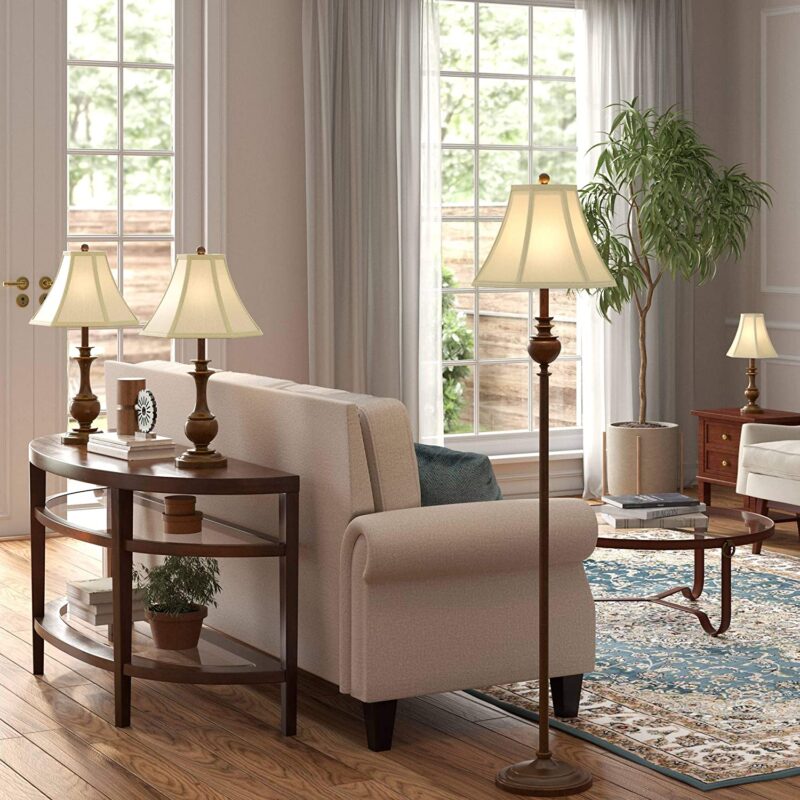7 Question to Help Buy the Right Light Bulb

- What Wattage Works for Me?
Not only is the wattage level a taste preference, but using a light bulb with wattage above the maximum that your fixture can handle can be a major fire hazard. Most people don’t realize that you can use a light bulb featuring wattage less than what your fixture calls for.
Want to set the mood for a romantic evening? Choose lower 30 wattage lighting evenly spaced around the room. Trying to study for a big exam? Brighten up your senses with a 100-Watt bulb back-lighting your workspace. You can achieve any mood you want anytime you want with our best-selling 3-Way Soft White Incandescent Light Bulb. Click here and buy in a six-pack and save for only $17.95
- What about the Lumens?
In order to determine exactly how bright you are lighting your space, look at the Lumens. Lumens measure the actual brightness of the bulb. So as gallons are to milk, lumens are to light bulbs.
More lumens mean a brighter light while fewer lumens mean a dimmer light. Some may say it’s more important to look at the lumens than the wattage when shopping for a lightbulb.
Our fan favorite is the Vintage Clear Filament Light Bulb which provides 340 lumens; ideal for a relaxing evening curled up with a good book.
- Should Shape Matter?
Certain fixtures need bulbs of a particular shape, so check the socket type before you buy. Our Country Style Amber Silicone Dipped Light Bulb measures thread size “E12” and glows great in our Classic Vintage Style Crystal Candle Chandelier. The number found after the “E” refers to the external diameter of the light bulbs thread in millimeters.
Silicone Dipped Light Bulbs put out a romantic low lit 7 watts, perfectly lighting an intimate dinner party. The dipped effect gives the impression of a soft, soothing candle flame.
- Is My Light Long Lasting?
Replacing light bulbs can be an annoying and time-consuming expense. Incandescent light bulbs typically have a shorter life span (around 1200 hours) than other sources such as fluorescent tubes which can last over 30,000 hours. A compact fluorescent light bulb may cost more initially, but because it not only lasts longer but costs so much less to run than other light bulbs, this adds up to big savings in the end.
- What Kind of White do I Want?
Warm White, Neutral White, Bright White, Cool White, Daylight… There are several different color temperatures when it comes to light bulbs.
You may wonder, why does color temperature matter? Light bulb color choices aren’t just about preference; they can change the design of a room if used thoughtfully.
Because of their warmer color temperature, soft white light bulbs will emphasize the warmer colors of a room such as reds and oranges and alter the contrast throughout the space, while bright whites and cool whites will highlight the blue and green hues and energize your space.
Try our Vintage Antique Edison Style Incandescent Light Bulb in your bedroom which at only 2748 Kelvins (Warm White) provides a cozy, calm, and intimate ambiance.
- Is Energy Efficiency Essential?
Most people don’t stop to think about the importance of how long a light bulb will last until it goes out in a hard to reach place such as a second story floodlight on the outside of your house, or in a light fixture on a 12-foot ceiling. Not only are long-lasting light bulbs good for the environment by reducing waste, but can prove essential in that high-hanging chandelier.
- Does Mercury Matter to Me?
Legislation passed by Congress in 2007 and signed into law by then-President George W. Bush, plans to phase out incandescent light bulbs over time to an eventual ban which has many consumers worried. The plan is to move consumers toward more energy-efficient light bulbs such as CFLs which use 20-40% less energy while producing the same lumens. Bulbs known as CFLs (compact fluorescent) do not pose a danger on their own. The danger of a CFL light bulb is the mercury found inside the bulb that can leak out once broken. Mercury is highly toxic and is especially harmful to the brains of both fetuses and children. If a CFL bulb is broken, mercury escapes both as a vapor that can be inhaled and as a fine powder that can settle into the fibers of your carpet. While the amount of mercury emitted is relatively small (around 0.04 to 0.7 milligrams), the level of hazard is still being debated today. When you shop for all your light bulb needs at www.royallampshades.com, you can be confident in the health and safety of your household because all of the light bulbs we carry are mercury-free!


 Basic Shades
Basic Shades
 6-way
6-way
 Bell
Bell
 Drum
Drum
 Empire
Empire
 Hexagon
Hexagon
 Oval
Oval
 Rectangle
Rectangle
 Round
Round




 Floating Canvas Frames
Floating Canvas Frames
 Handcrafted Lamps
Handcrafted Lamps
 Picture Lights
Picture Lights
 Wall Lamps
Wall Lamps